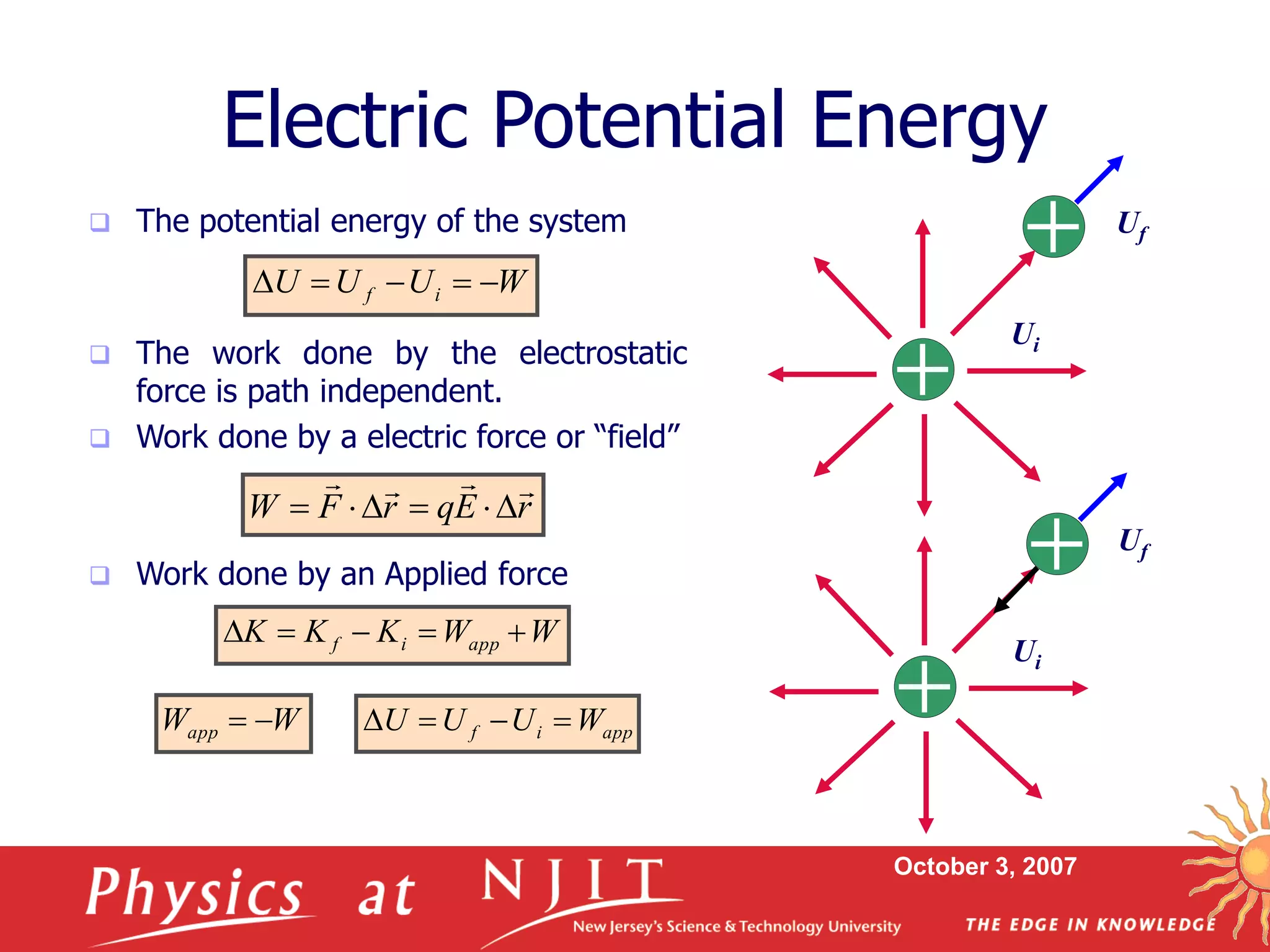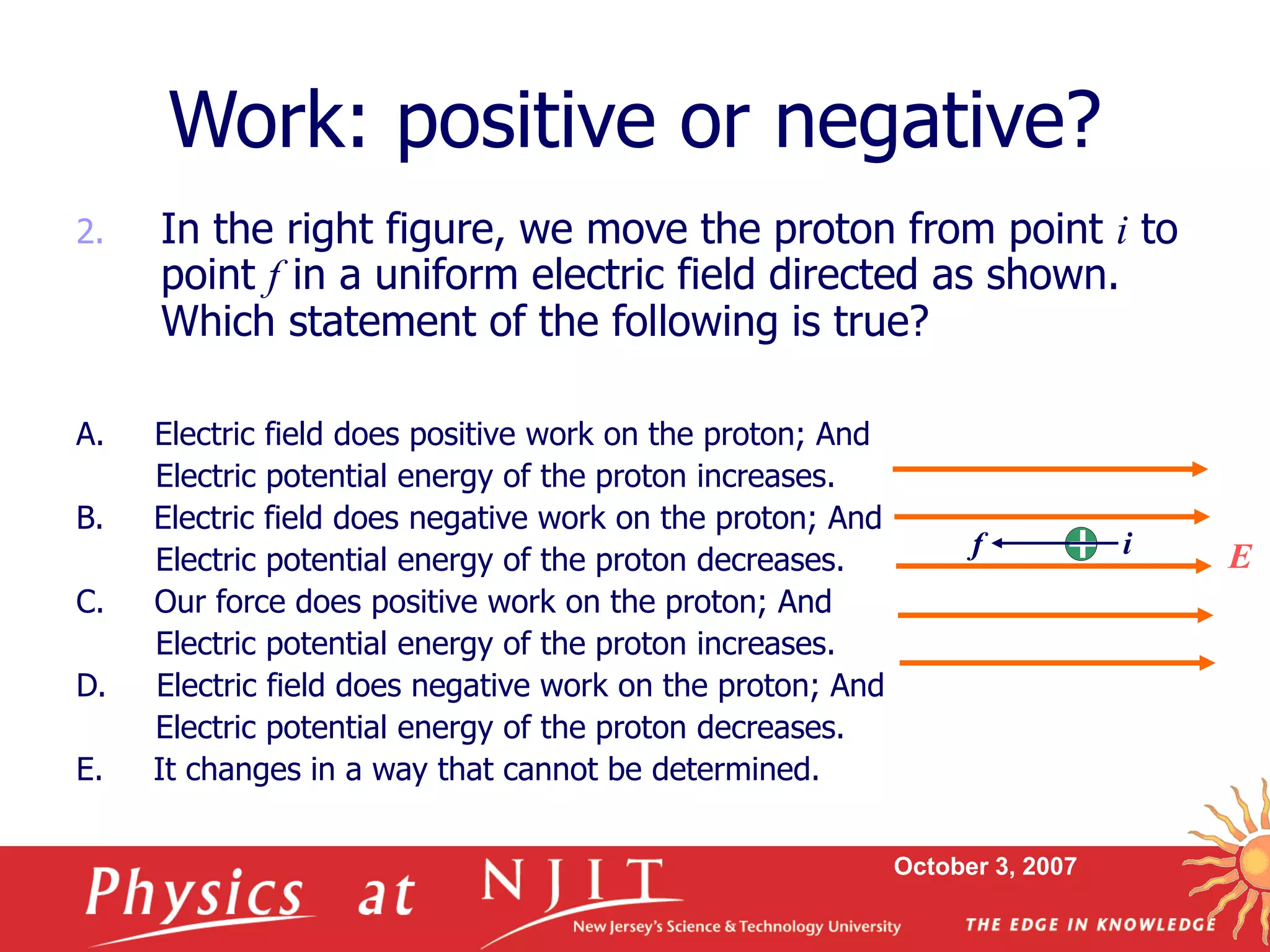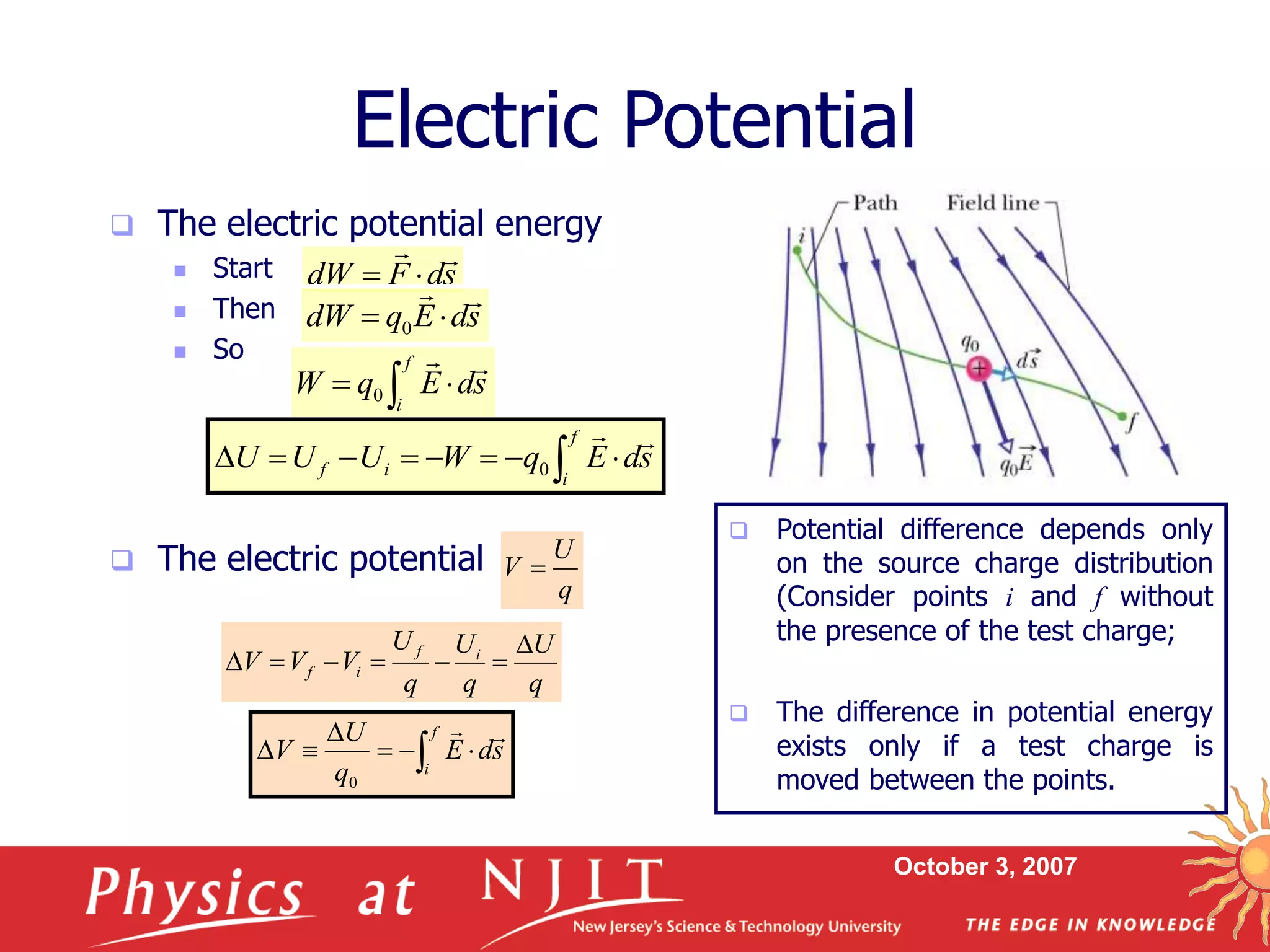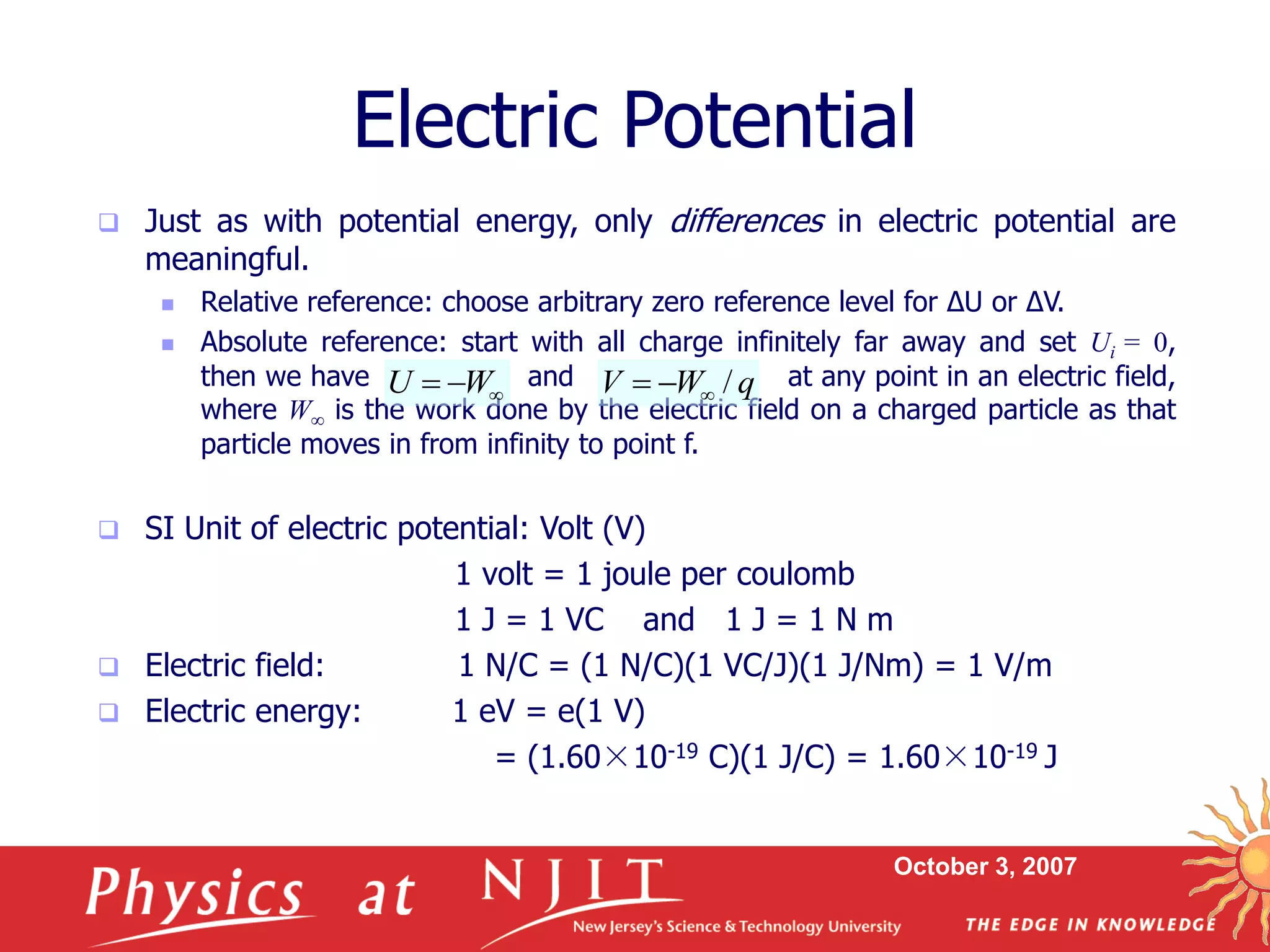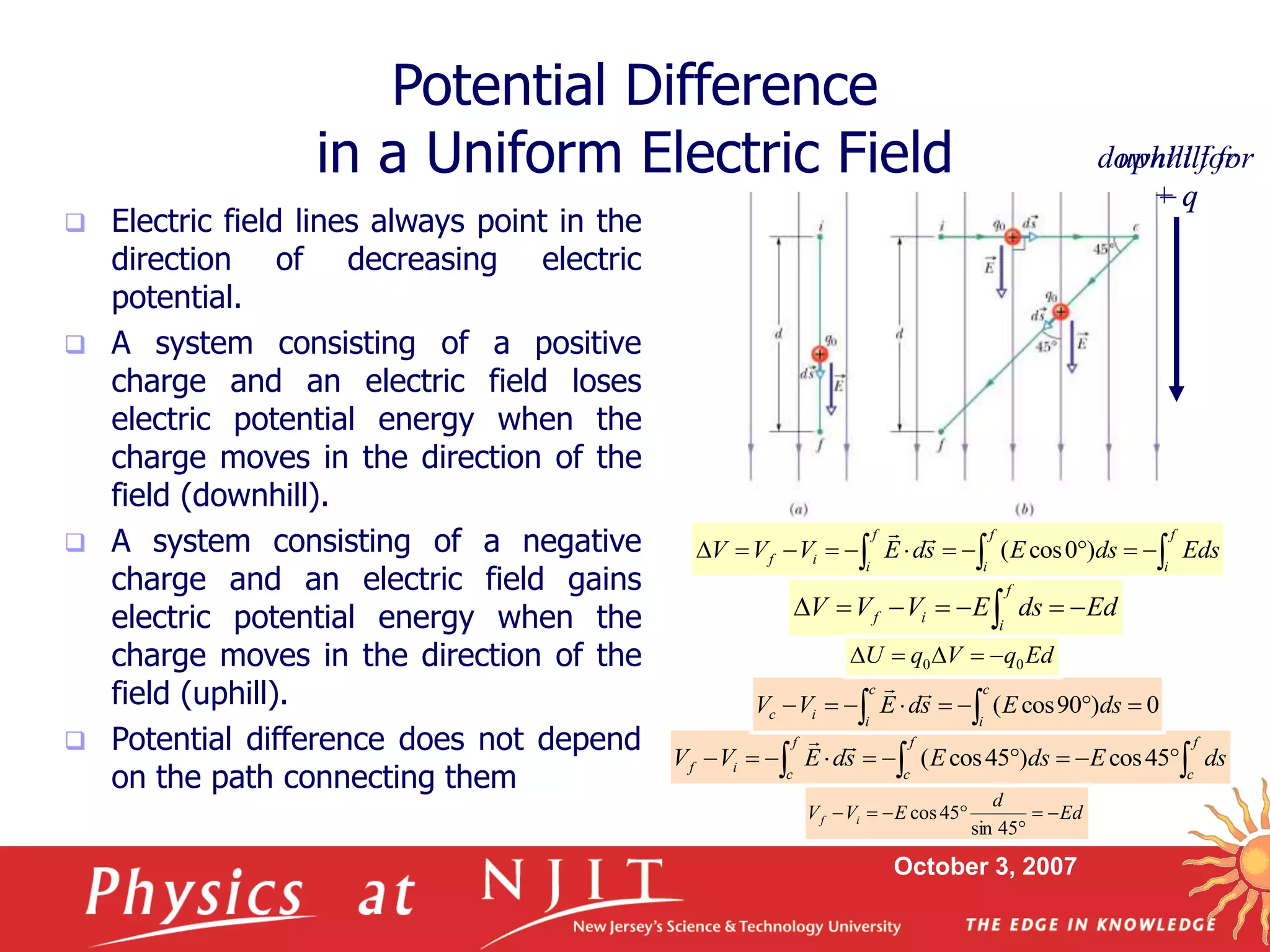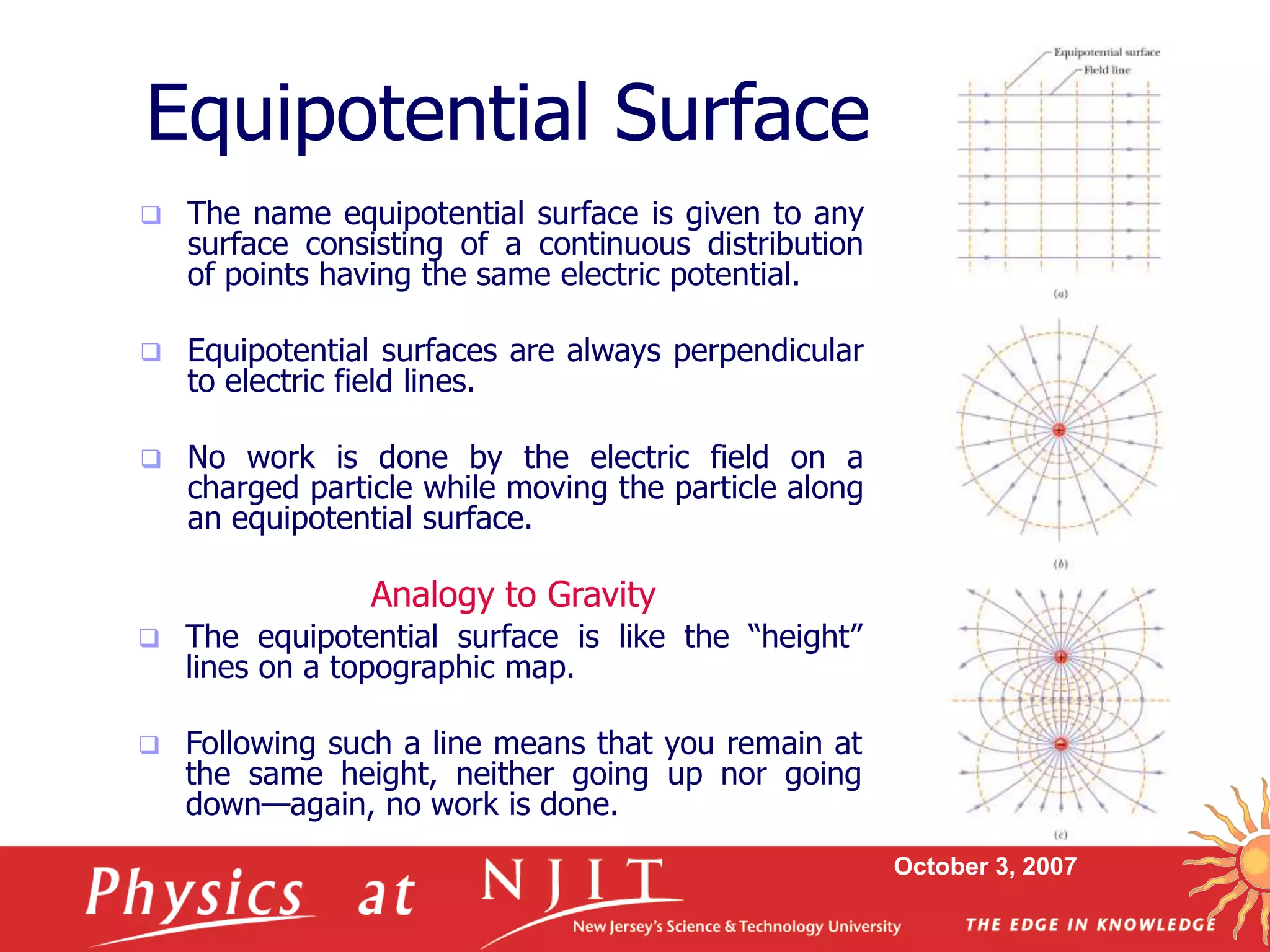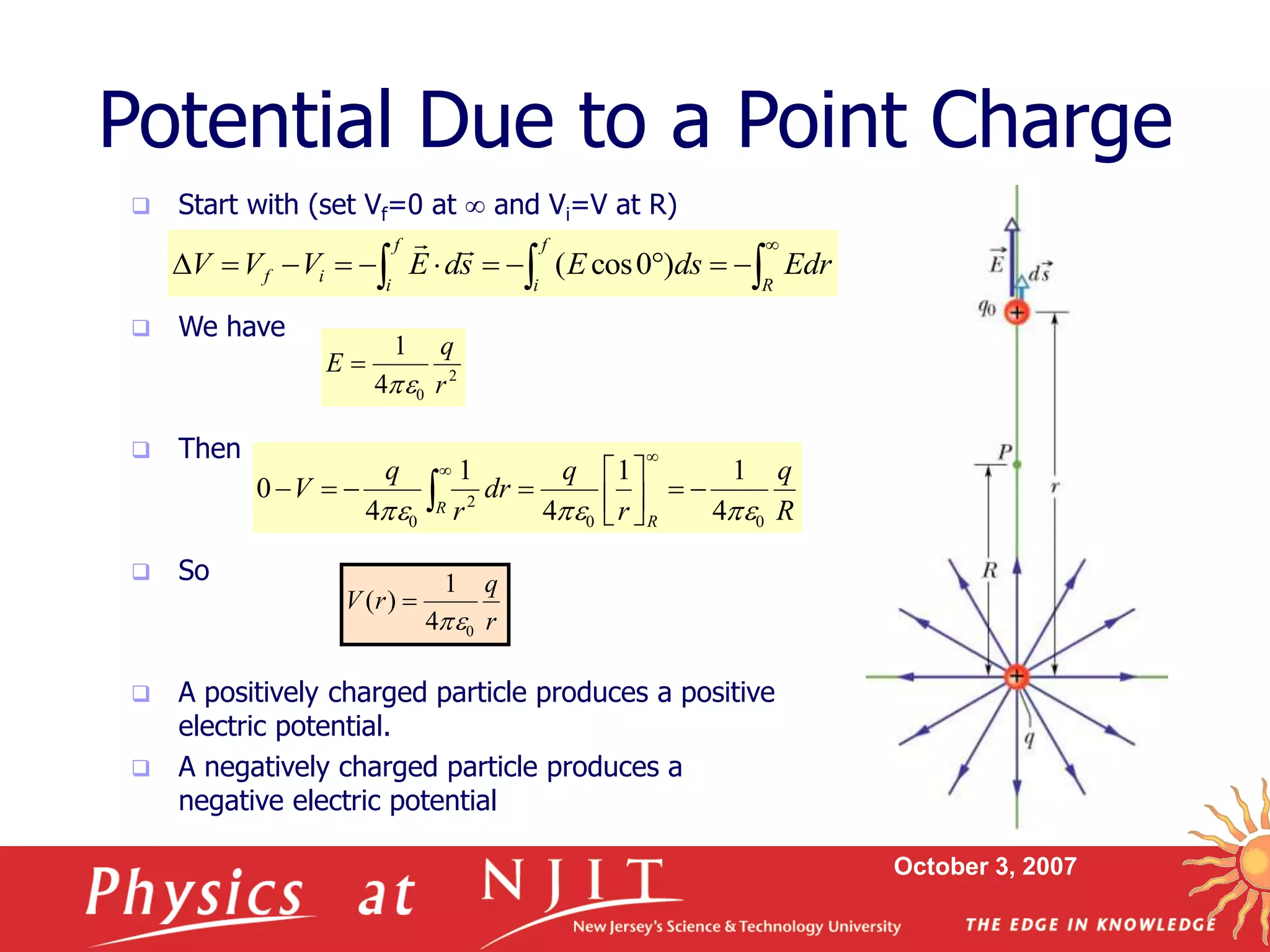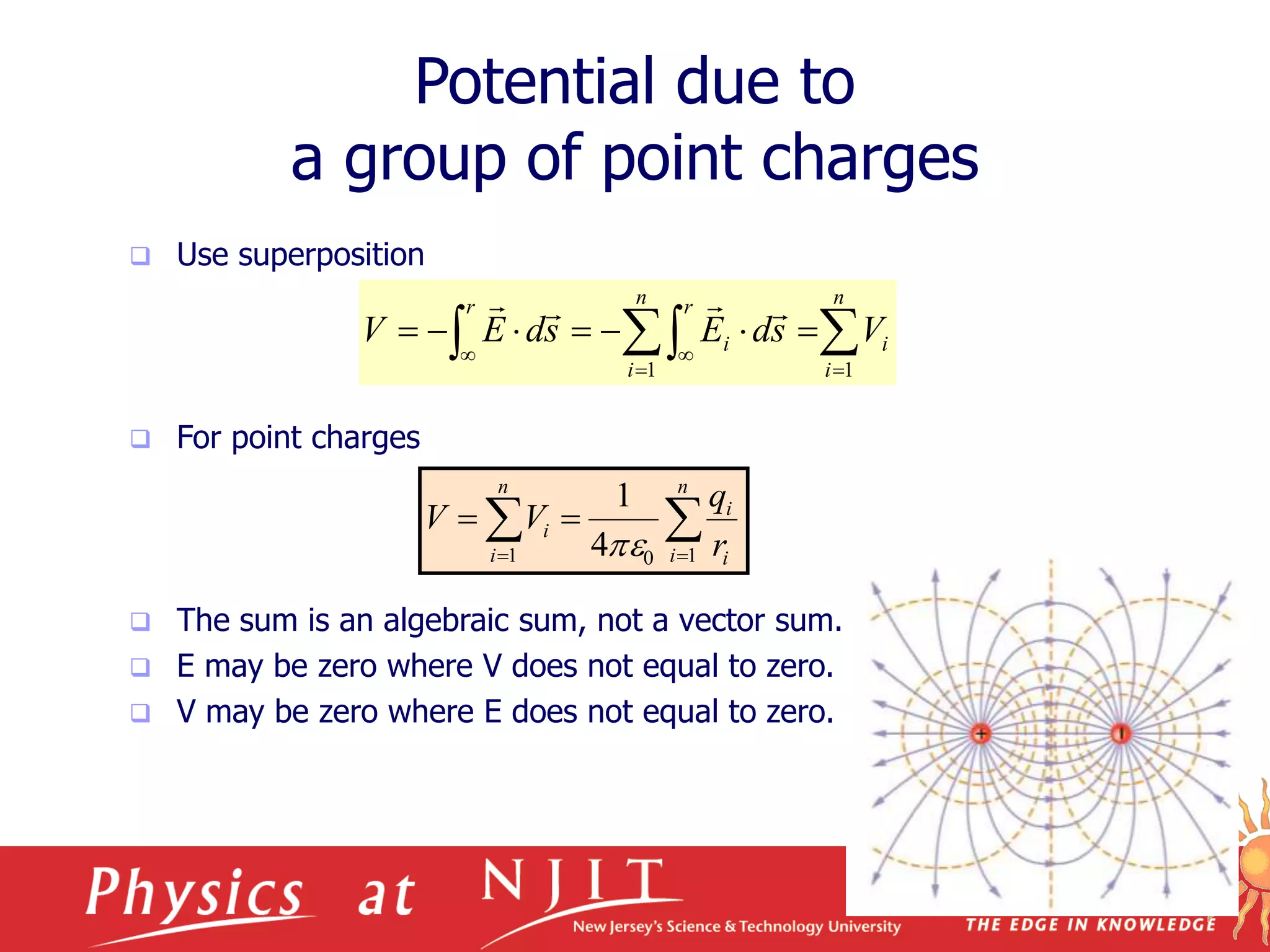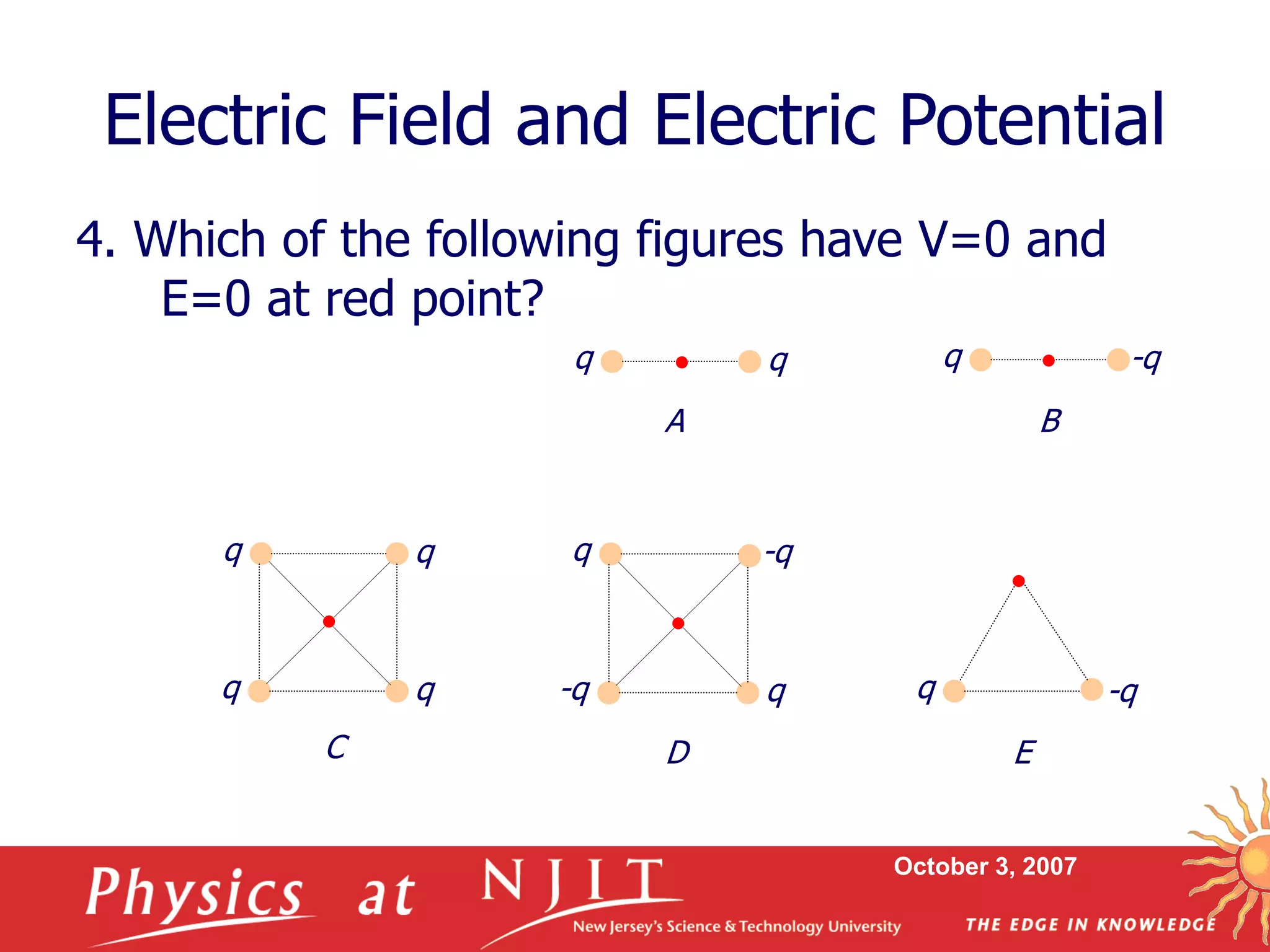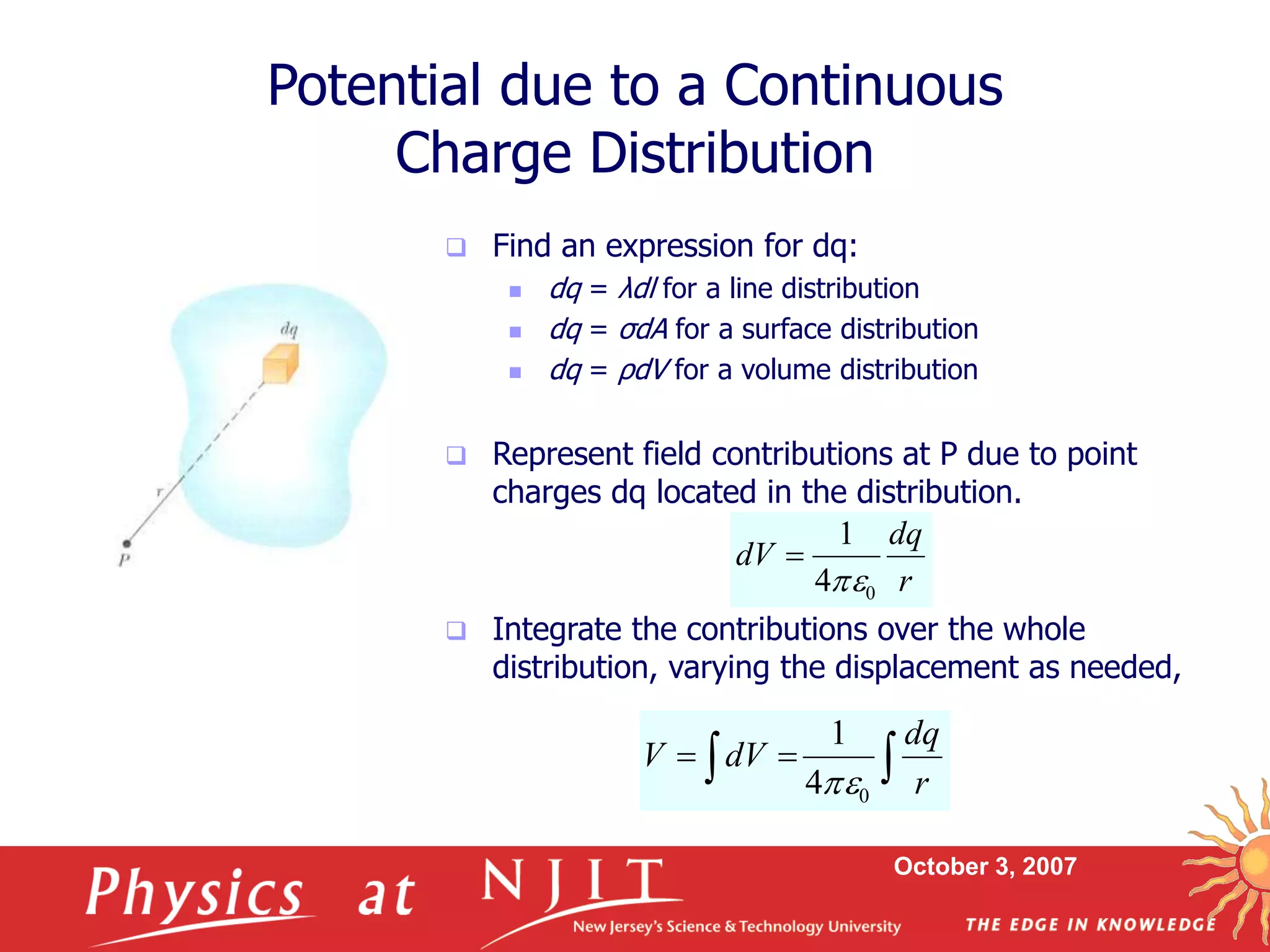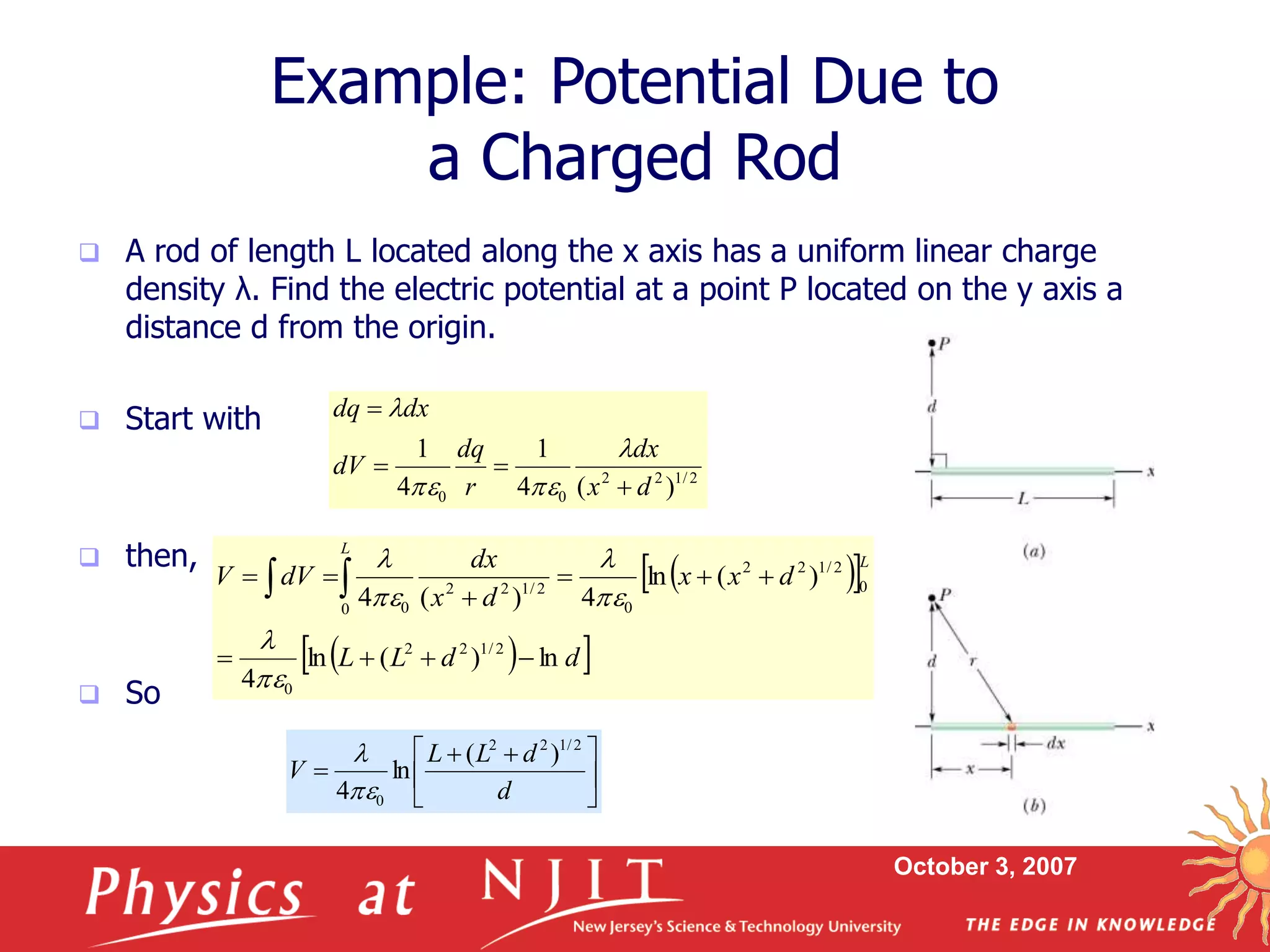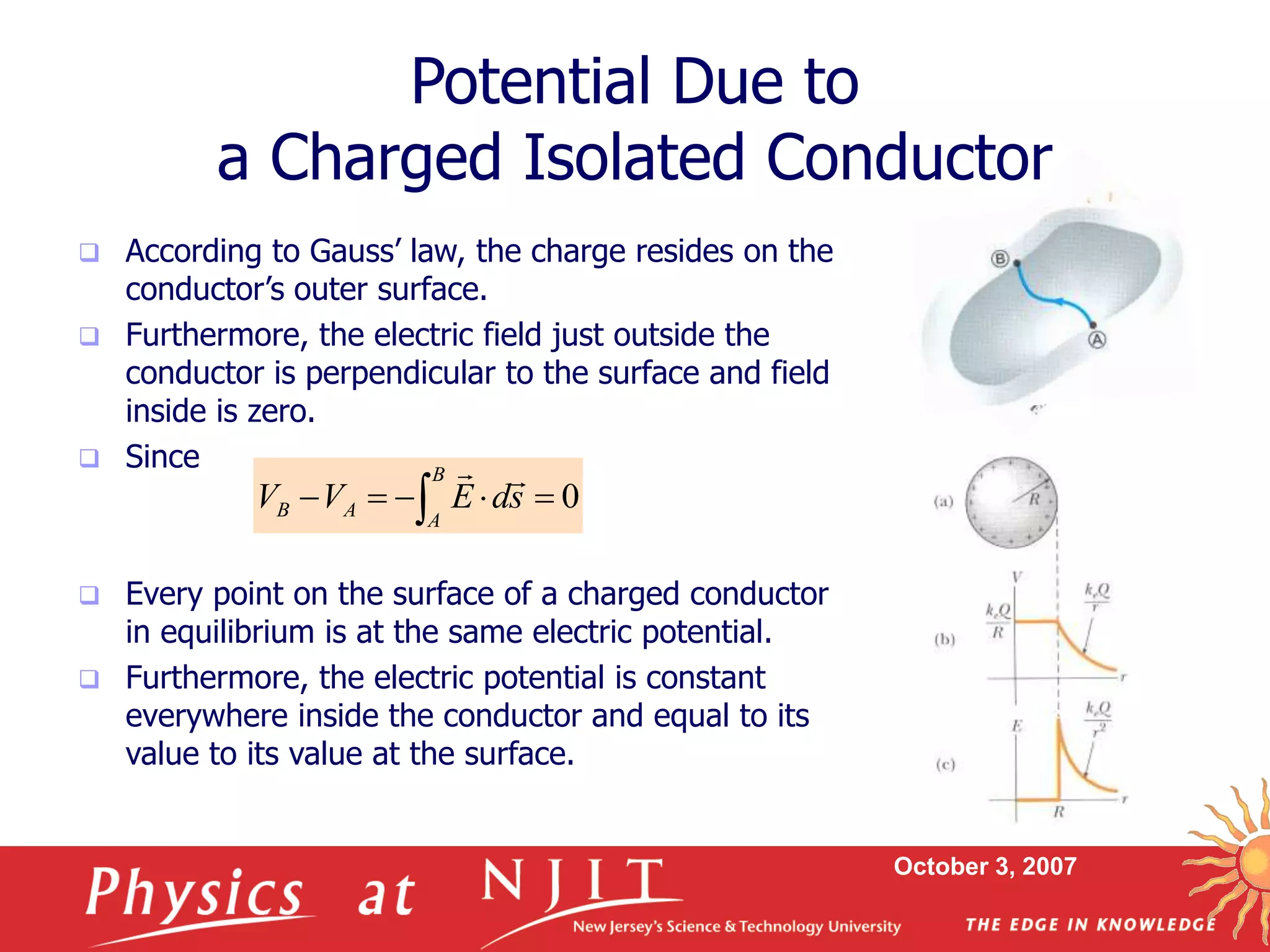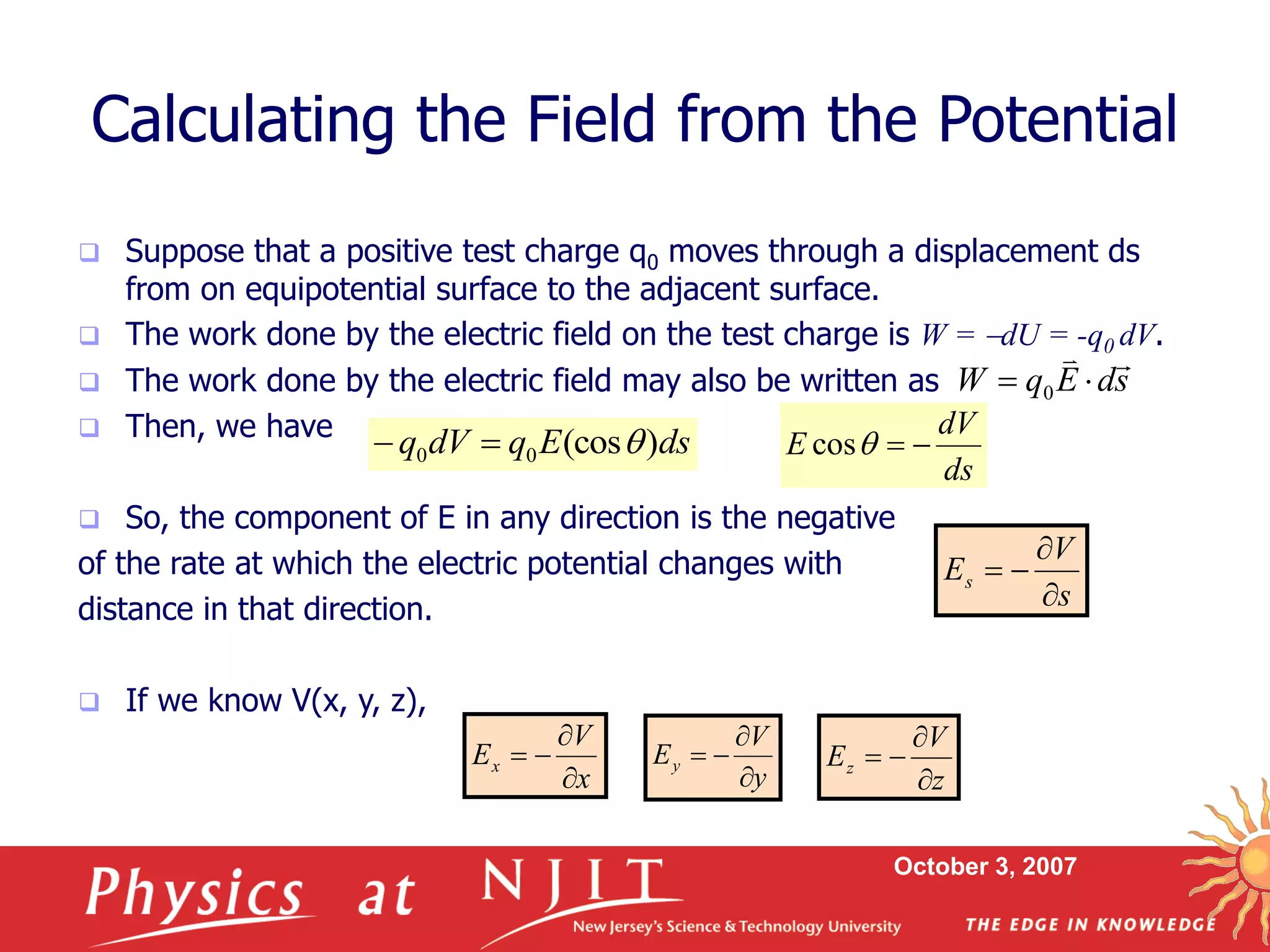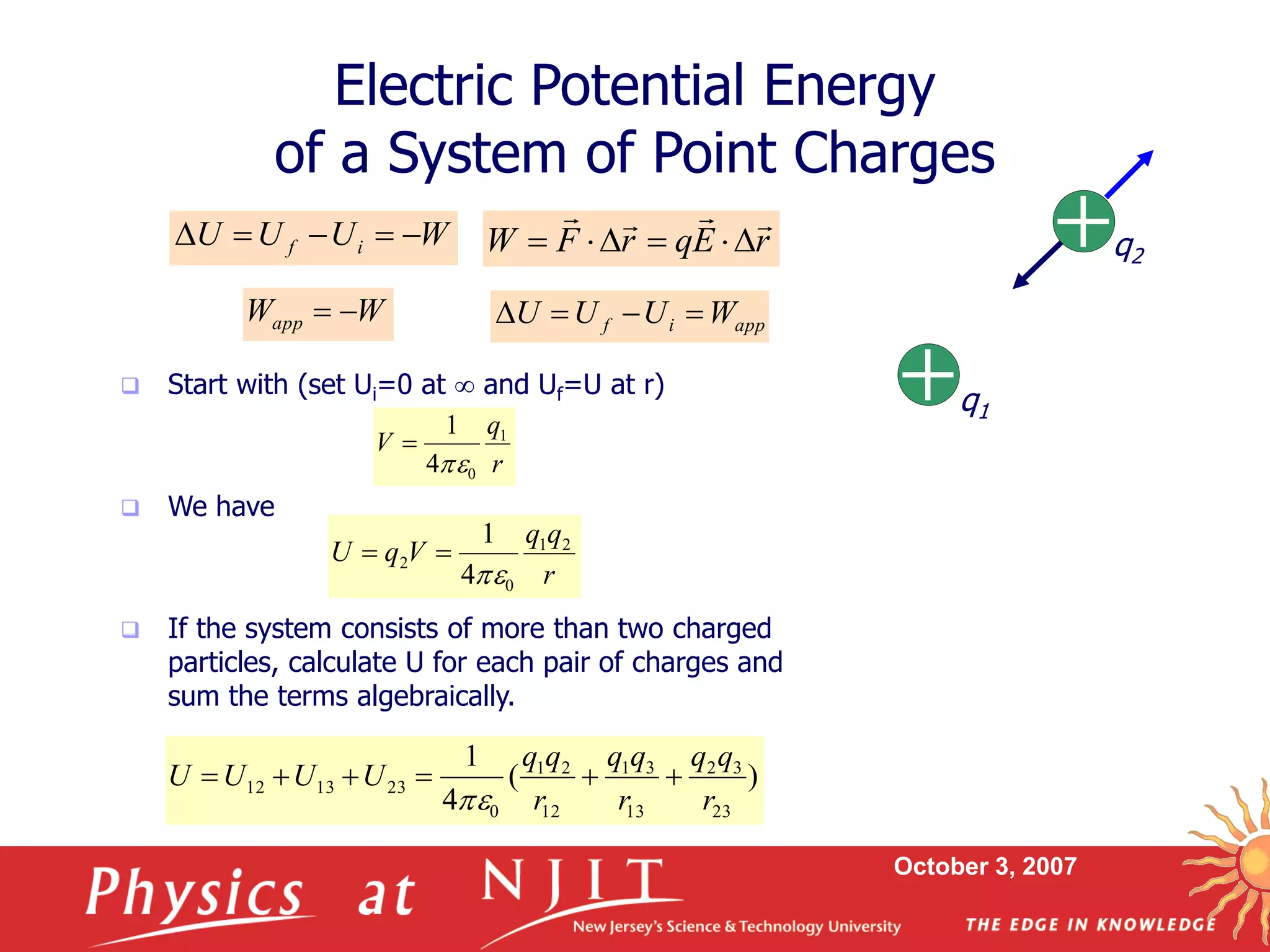The document summarizes key concepts from a physics lecture on electric potential including:
1. The electric potential (V) at a point is defined as the work (W) done per unit charge to move a test charge from infinity to that point without acceleration.
2. Equipotential surfaces connect all points of equal electric potential. Electric field lines are always perpendicular to equipotential surfaces.
3. Expressions are derived for the electric potential due to point charges, lines of charge, and continuous charge distributions using integration of the electric field.
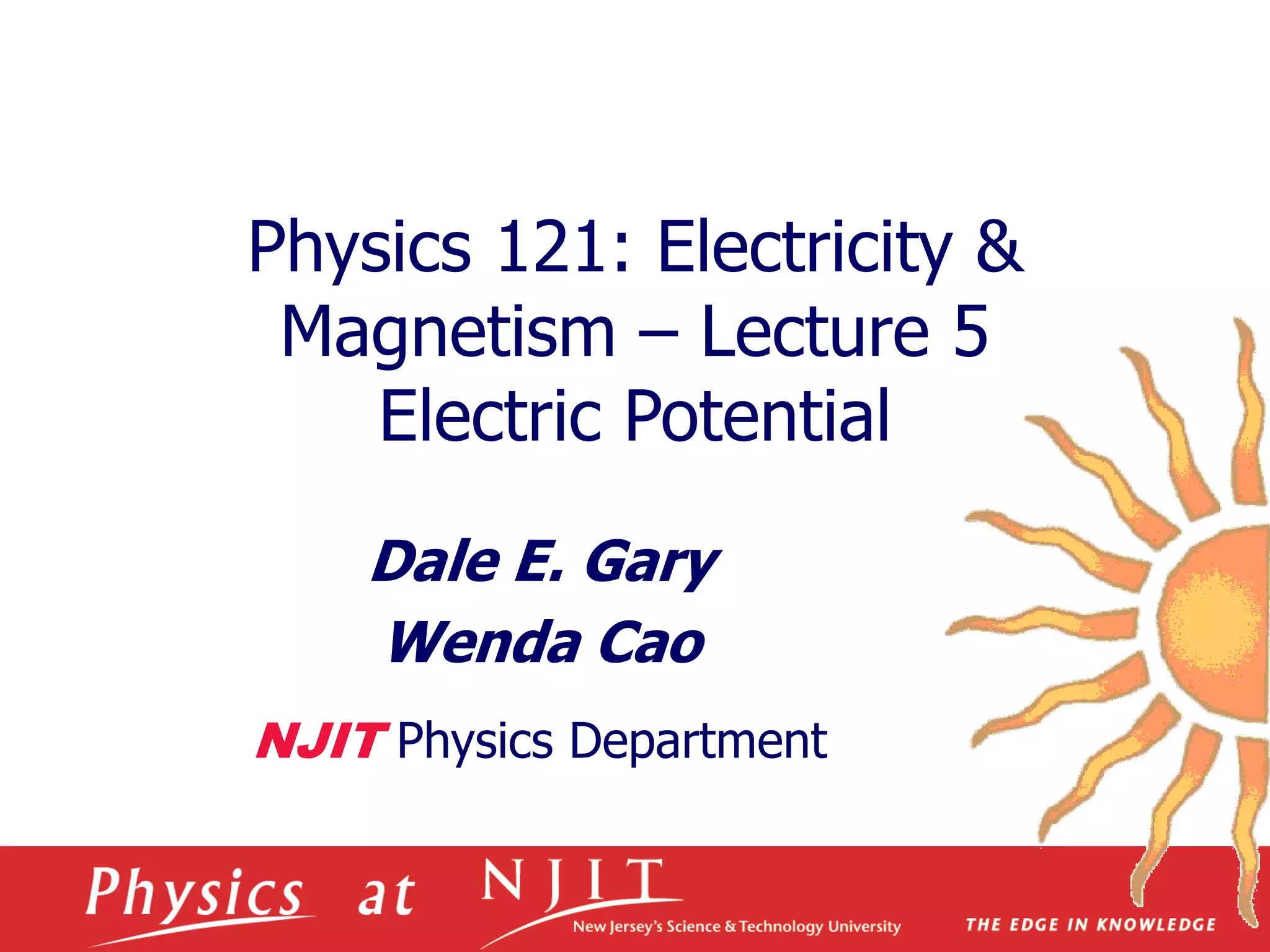
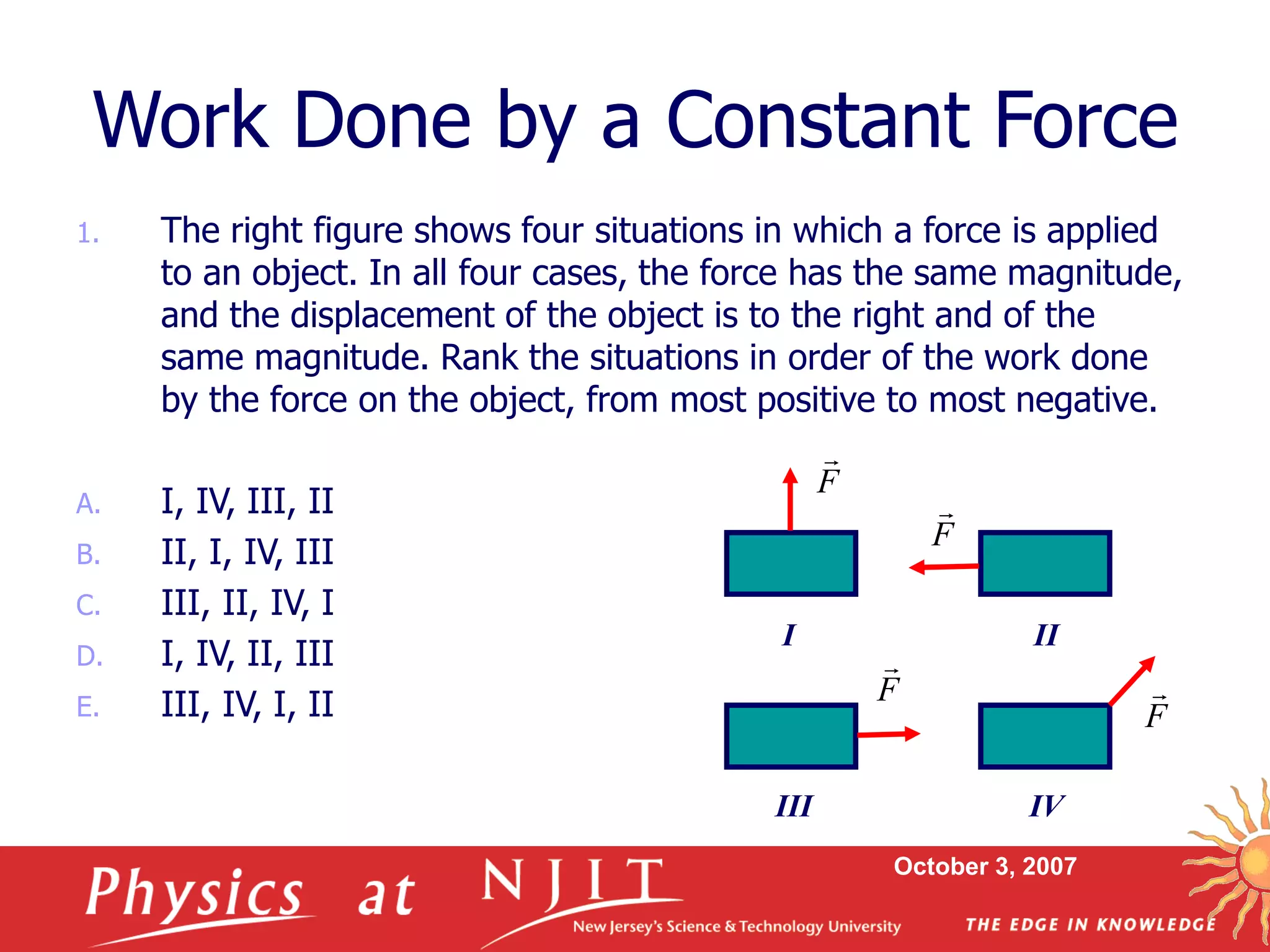

![October 3, 2007
Potential Energy, Work and
Conservative Force
Start
Then
So
f
i
i
f
g
mgy
mgy
j
y
y
j
mg
r
F
W
]
ˆ
)
[(
ˆ
mgy
Ug
U
U
U
W f
i
g
g
i
f W
U
U
U
The work done by a conservative force
on a particle moving between any two
points is independent of the path
taken by the particle.
The work done by a conservative force
on a particle moving through any
closed path is zero.
yf
yi
r
g
m
](https://image.slidesharecdn.com/physics121lecture05-230302142950-53427b1a/75/physics121_lecture05-ppt-4-2048.jpg)
